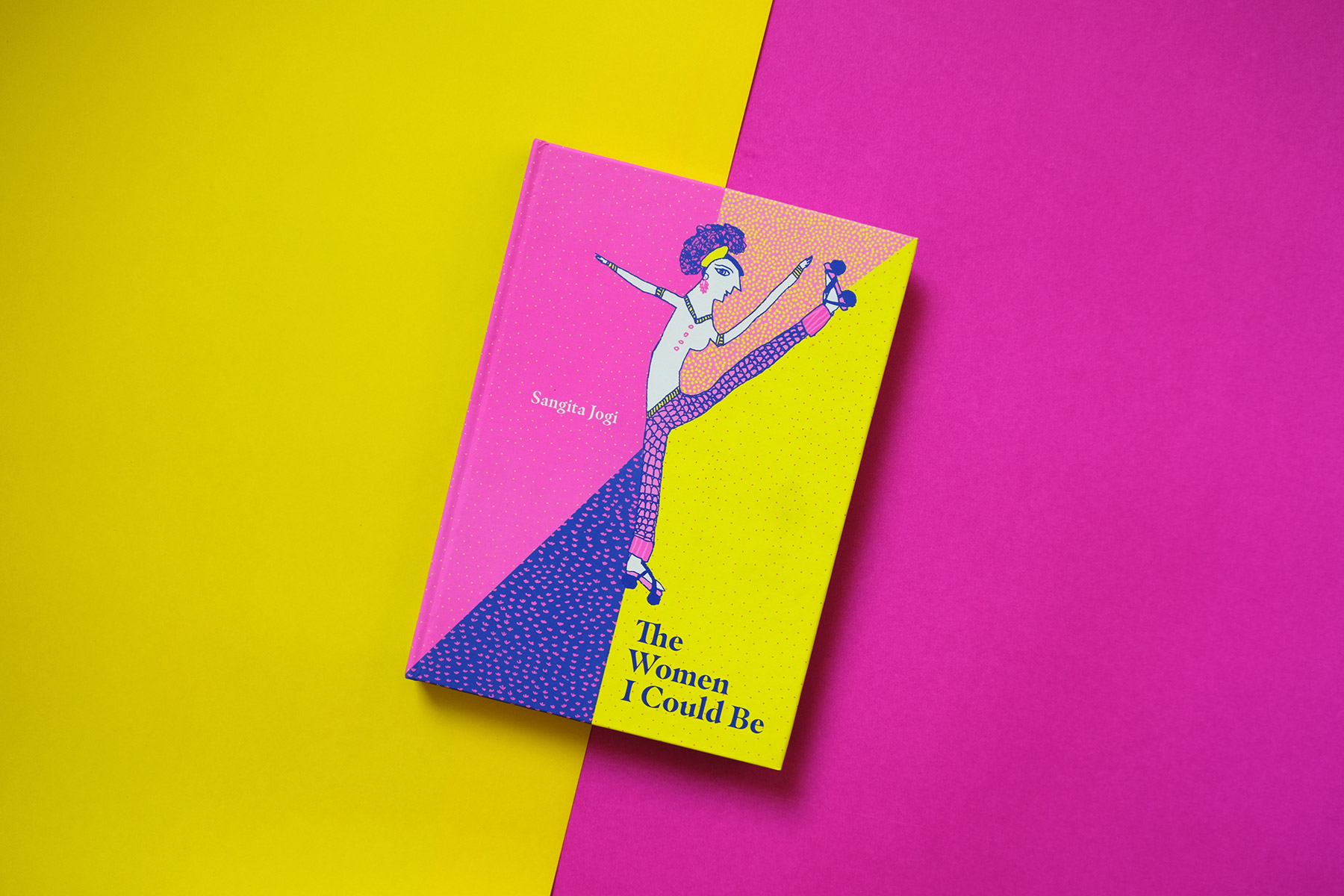
17 Oct The Making of Women I Could Be
By Gita Wolf
We’re proud and gratified to finally present the world with a project that is especially close to our feminist hearts. Several years in the making, the story of how this amazing book came to be is worth telling, at length.
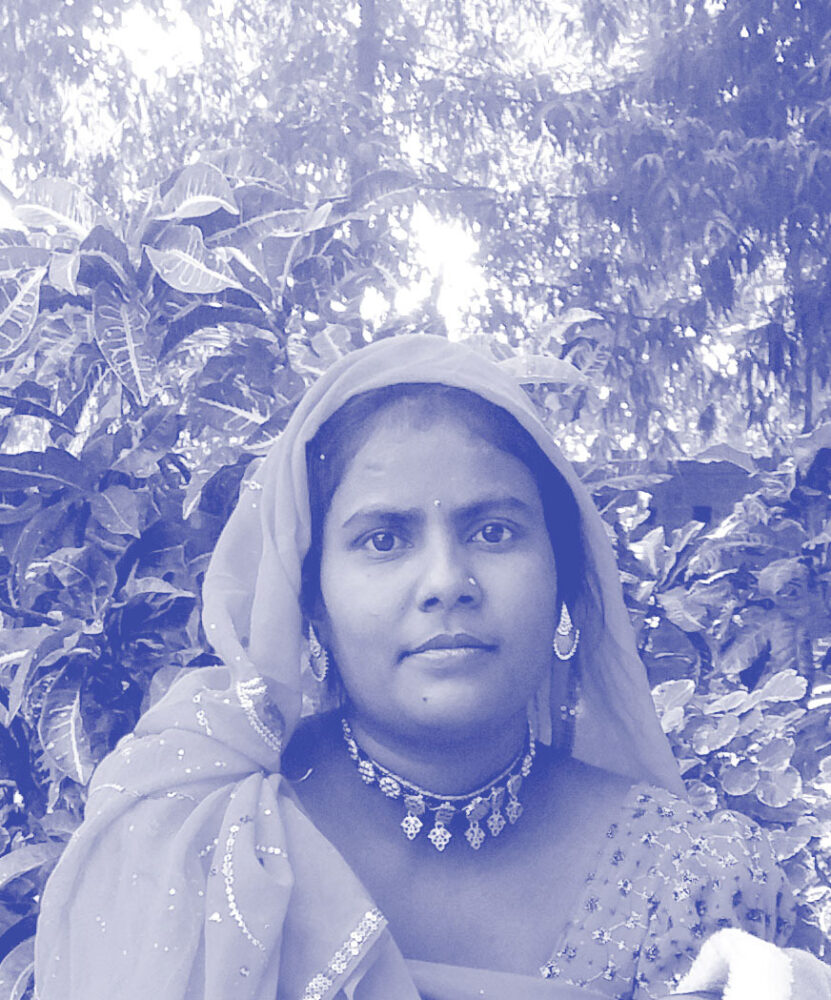
Meet artist Sangita Jogi
Sangita's Story
Sangita Jogi lives with her extended marital family consisting of her husband, children, and in-laws, as well as her husband’s brothers, their wives and children. They are farm labourers, and Sangita’s life is no different from that of scores of young women in impoverished rural communities. Her husband’s village in Rajasthan is in a region known for its strict patriarchy. Women are expected to be veiled in the presence of men, and are rarely active in any kind of public life. Despite all this, Sangita has discovered an extraordinary creative outlet for herself: she draws.
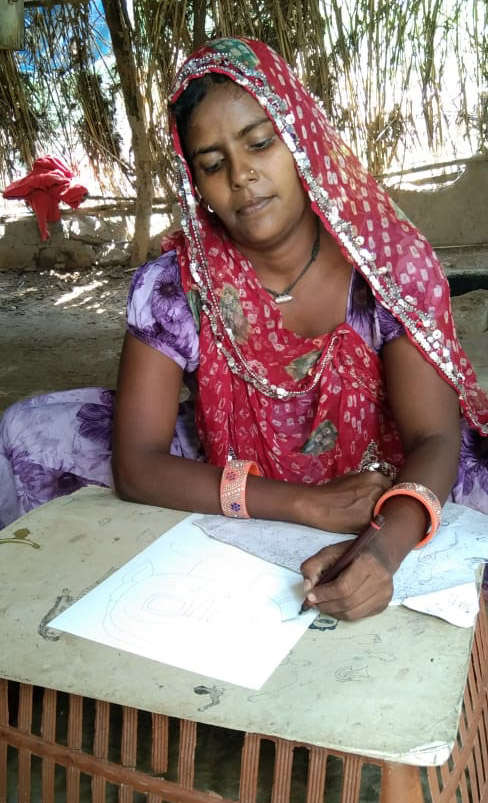
Hard at work
Her art is therapeutic, in a sense. But it is also much more: it is active and energetic, fuelling a positive spirit that is remarkably questioning.
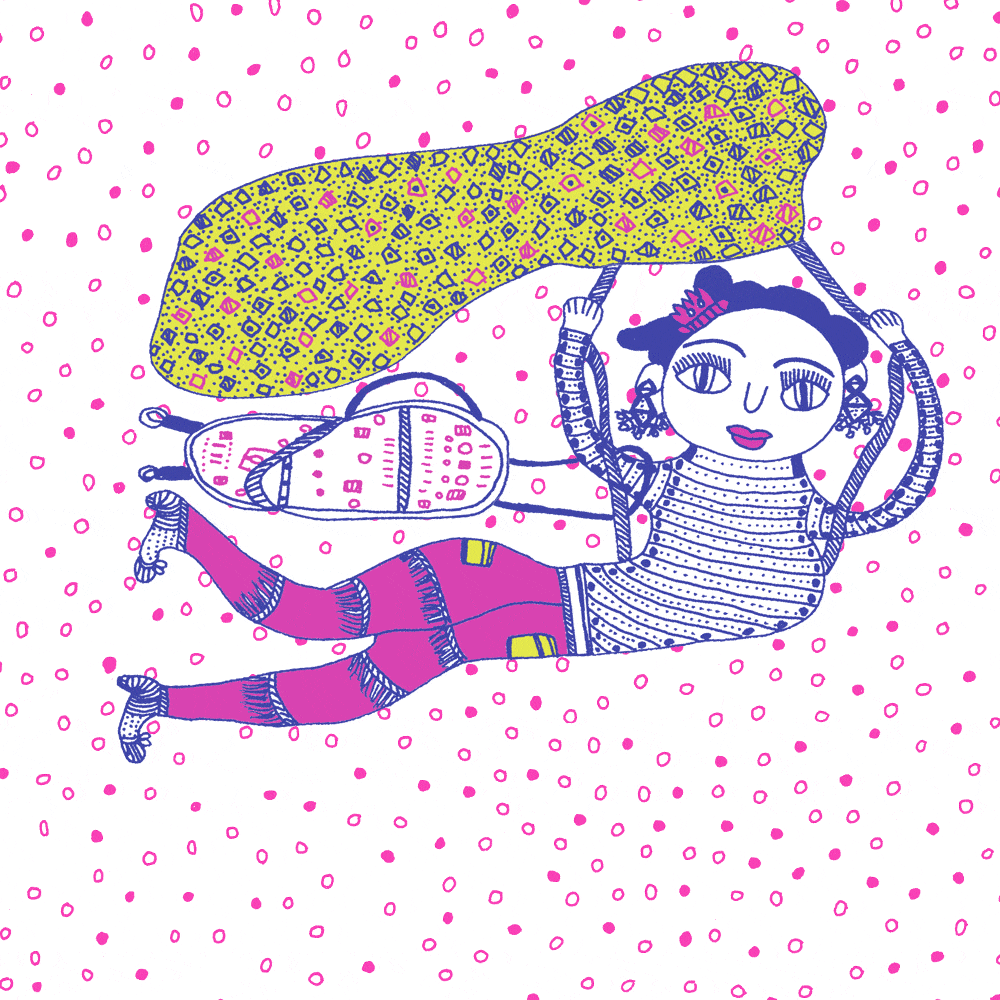
Dive right in!
Given her circumstances, it’s hard to say where Sangita’s extraordinary perspicacity comes from. She has very little formal education, and regrets not having been able to continue her schooling. Perhaps it has to do with her natal family: her father and mother were both self-taught artists. Originally from a nomadic performing community in Rajasthan, they settled down with their extended family near Ahmedabad, Gujarat, earning their living from manual labour, occasional performance and a few paintings they sold.
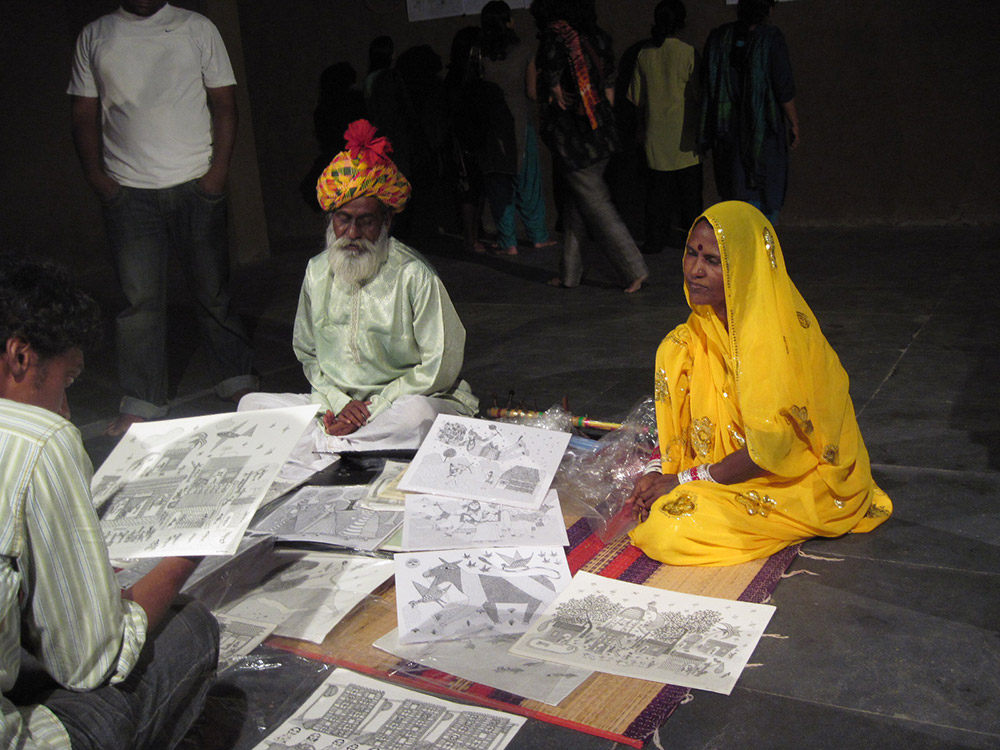
Sangita’s parents: Tejubehan and the late Govind Jogi
The couple encouraged their children to draw, and the environment at home was always creative.
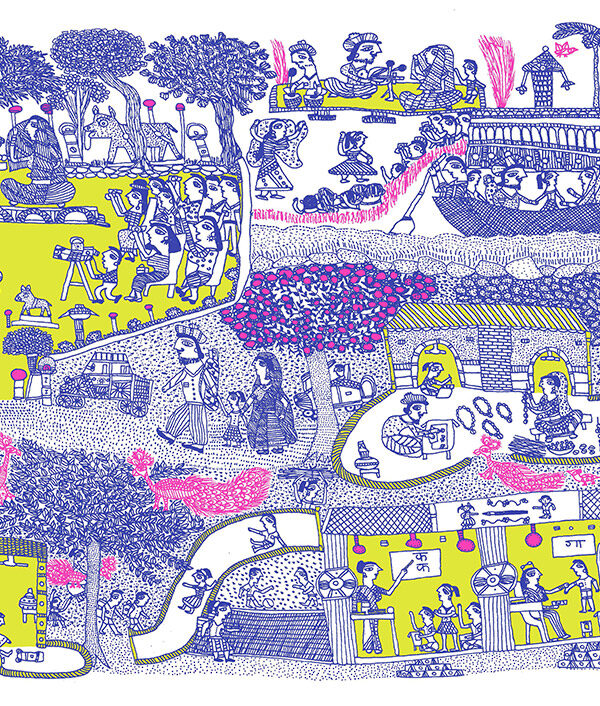
Scenes from Sangita’s childhood
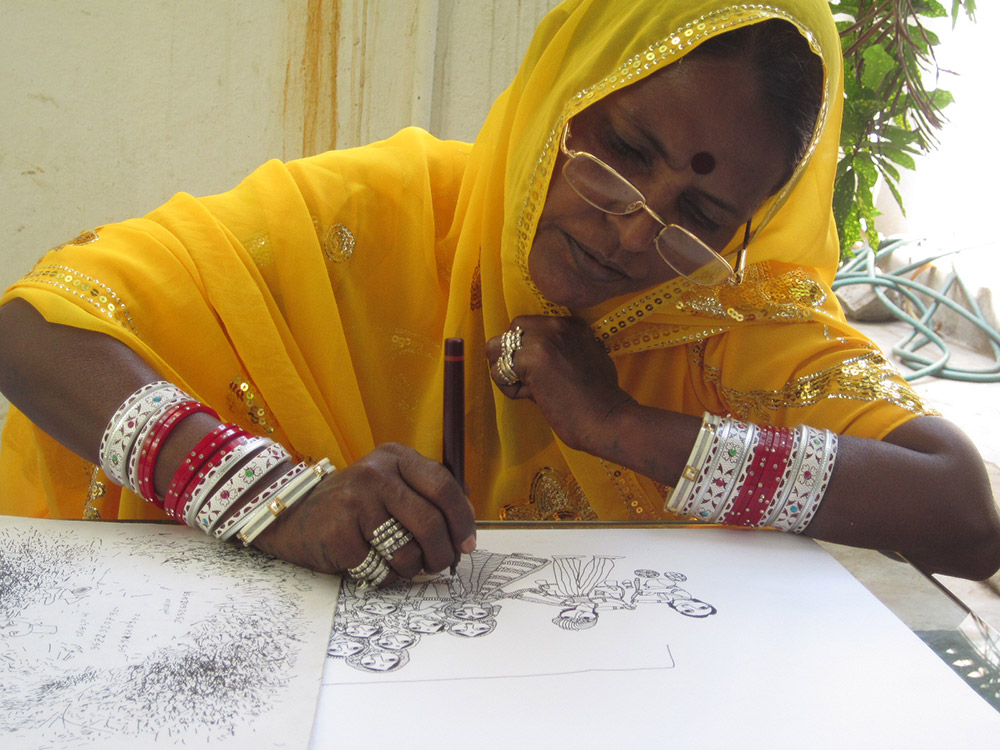
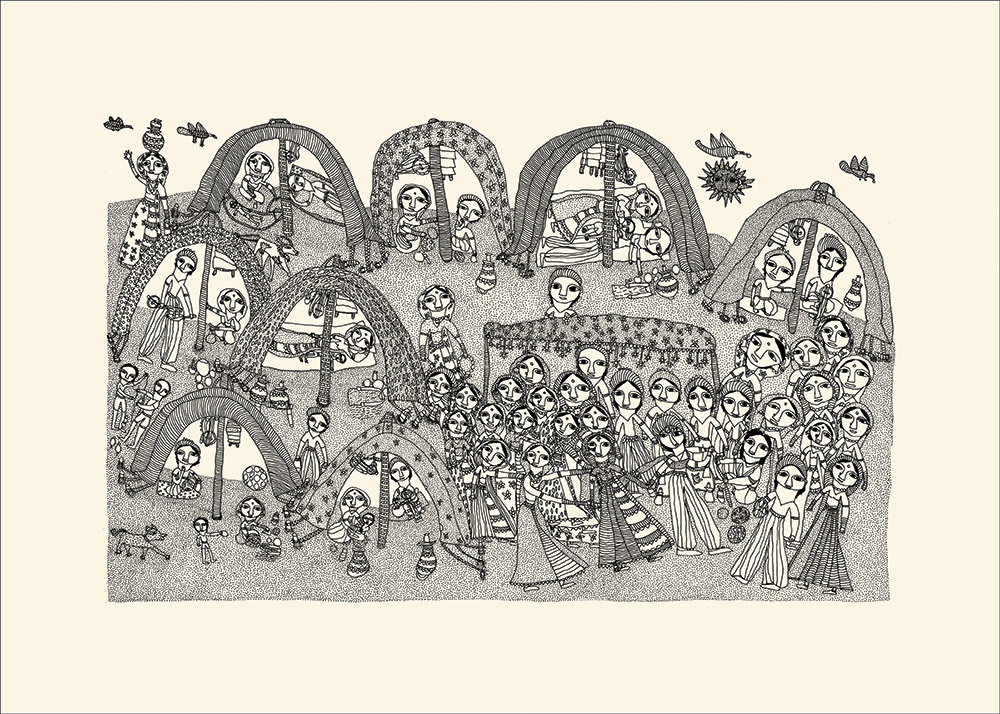
Tejubehan illustrating in her inimitable style; a spread from Drawing from the City
Sangita in fact came to our notice through her mother Tejubehan, a wonderful artist in her own right. We’d worked with Teju for several years and created two unique books with her: Drawing from the City and Mother Steals a Bicycle. During one of her visits, Teju brought along Sangita’s drawings, talking at length about her imagination and talent, and lamenting her sadly limiting circumstances.
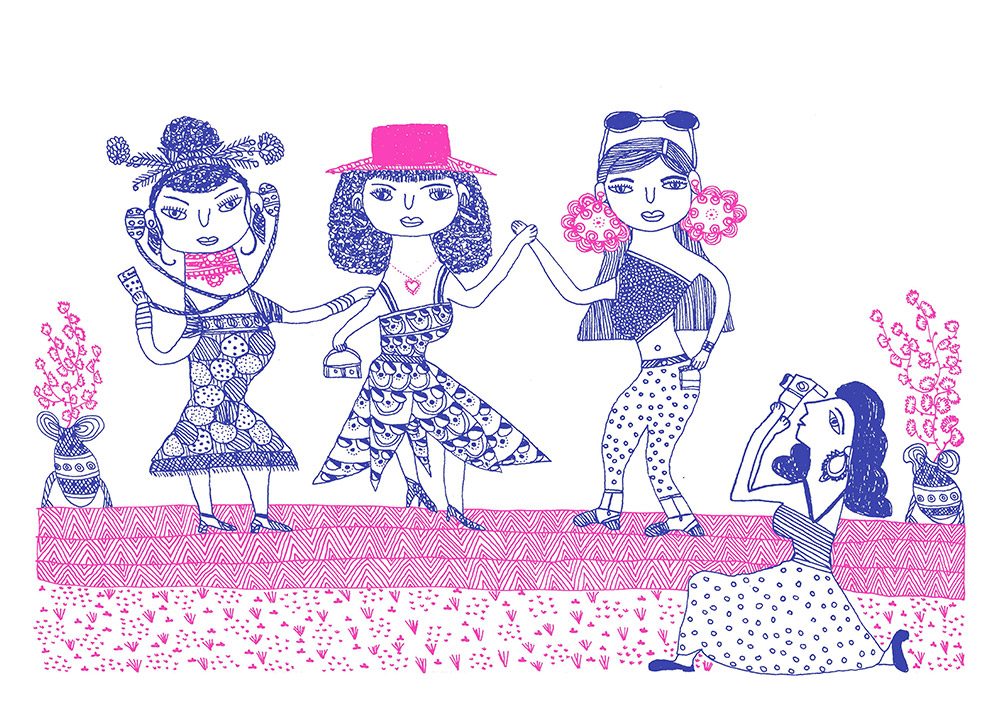
Sangita’s universe of fabulous women
When we first saw Sangita’s drawings, we were blown away. No doubt inspired by her mother Teju’s work—which also featured strong and resilient women—Sangita’s art had a youthful, edgy brilliance which was completely her own. Her women were uncompromisingly modern—fun, feisty, fashionable, and outrageously over the top.
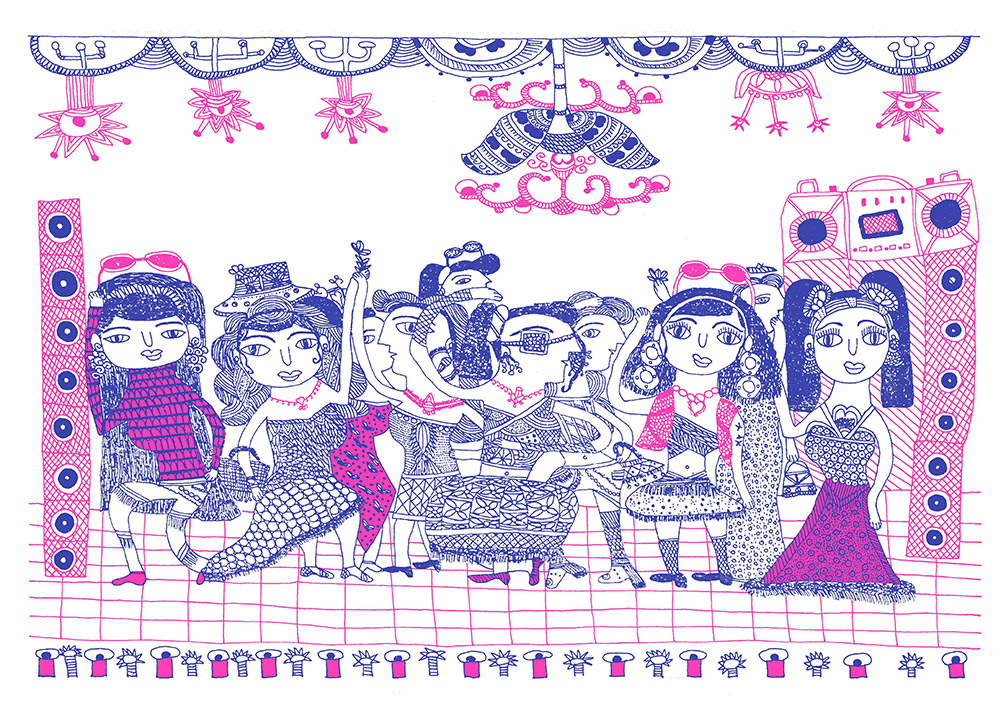
Life’s a party
We knew right away that there was a book in there. But it needed to be more than a collection of delectable images. They can be relished on their own, but they tell only half the story. We sensed that there was more to be discovered in the poignant tension between Sangita’s life of restraint and her uninhibited art and imagination.
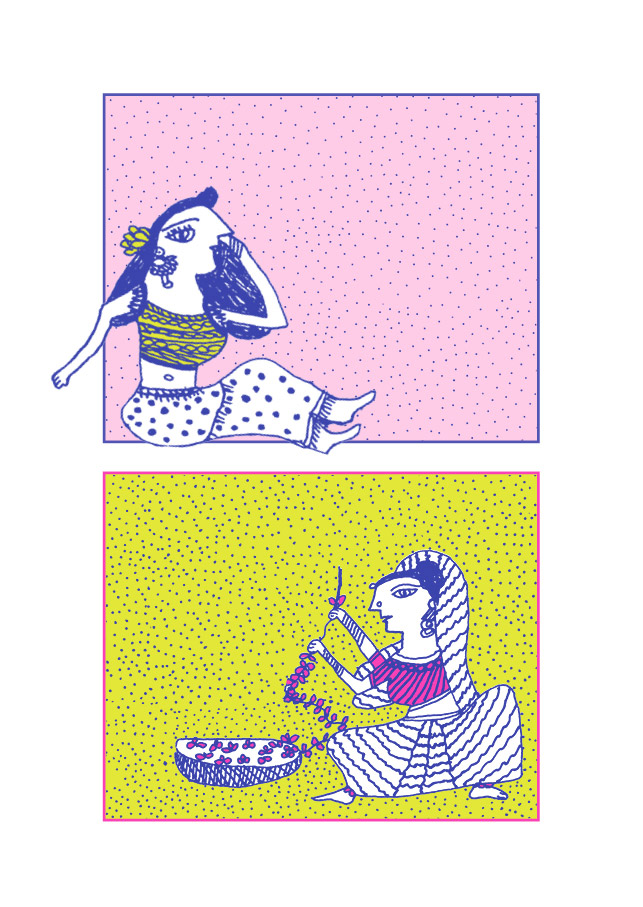
Contrasting lives
It’s not a question of simple irony or voyeuristic wish fulfilment. Sangita’s quest is real, in the deepest sense of the word—sincere, unpretentious and completely without attitude. She explores what it means to be a ‘modern woman’—who has the world open to her—without guile, envy or self-pity. She’s well aware of the treatment of women in patriarchal society, but negotiates her own course through it.

Moving forward
This sense of easy openness to the good things of life radiates from Sangita’s images. The women she conjures up relish everything: the warmth of female friendship, the excitement of far-off places, the energy of sport, the thrill of performance, the pleasures of dressing up, the hedonism of parties, the joy of photographing women doing different things…
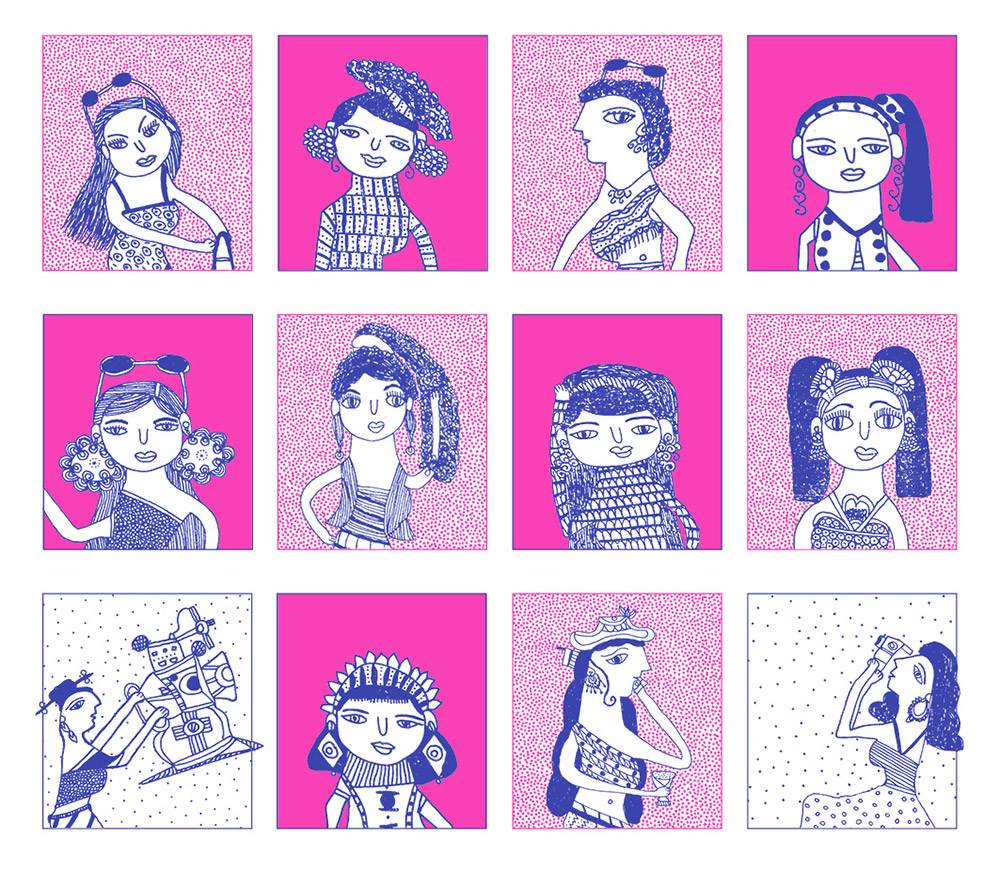
A mosaic of modern women
Sangita’s own work is a living testimony to what women can achieve. But in her own life, there are many things she wishes she had the power to change.
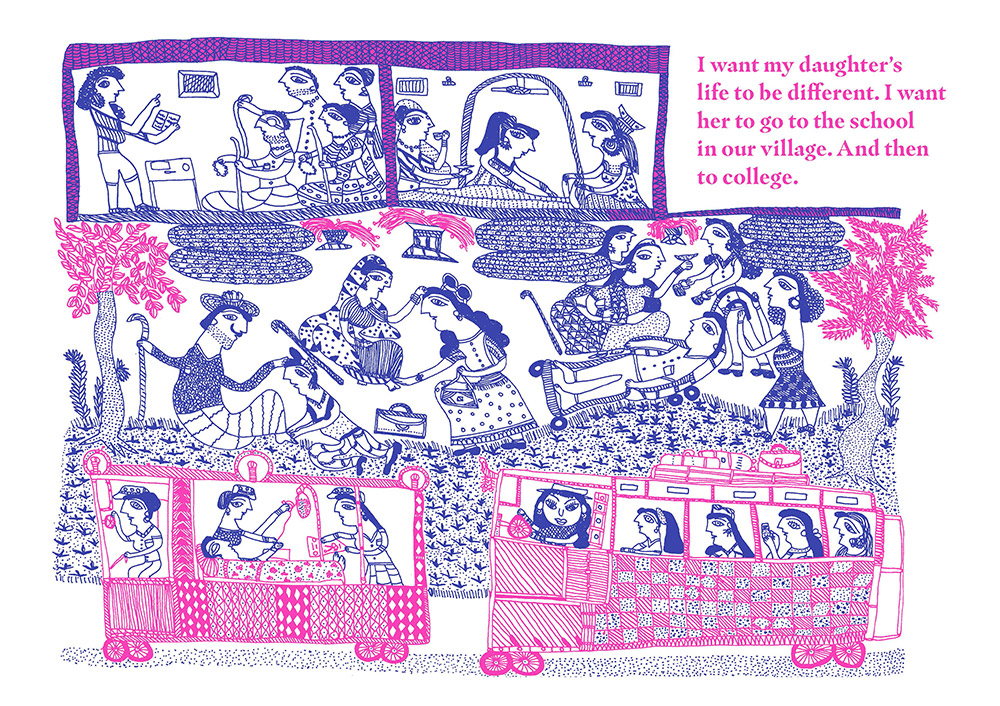
Creating a legacy
It is her art that keeps Sangita going. So looking at her sunny images while keeping in mind the reality of her life does complicate matters. Then again, when we do this, the experience is uplifting, rather than saddening. Perhaps because we’ve had a chance to feel something rare: an embodied sense of the radical potential of art. We see that art does matter. And that it has nothing to do with privilege or expensive material. Sangita’s own circumstances may not change overnight, but the agency she exercises so masterfully—her play on desire and aspiration, with all its inherent complexity—is something to be cherished and passed on. We wanted that to be at the core of her book.
Bringing It All Together
What we intuitively grasped as the basis of Sangita’s book turned out to be more of a struggle to achieve than we anticipated. Many of our artists are not familiar with the book form, nor have they set out to make a book. So when we collaborate with them, we work actively to create a viable form of the book, bringing in editorial and design elements that do justice to their story and art.
We began with stacks of black and white drawings, pen and ink on ordinary white paper. We loved the eccentric characters, the confident lines, the whacky details, and the potentially infinite stories.
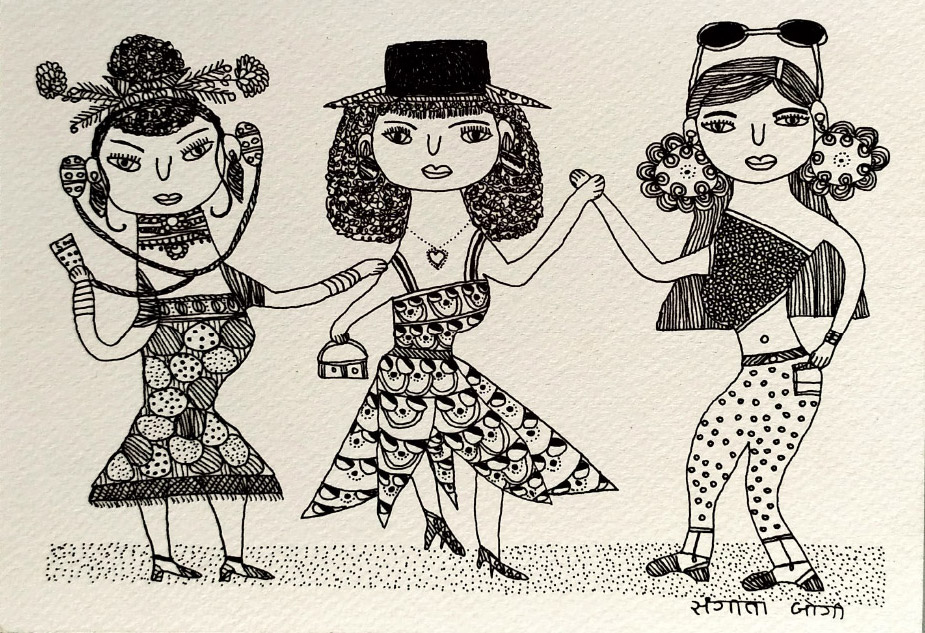
Black and white original
We also heard an account of Sangita’s story. Then we saw her photo, and the contrast between her conventional appearance and the outrageous women she created was astonishing, to say the least.
Clearly, we needed to talk to her at length. So one of our designers arranged to meet Sangita, prepared with questions on her life, imagination, ideas, influences, hopes… the oral interview was in Gujarati. Sangita was thoughtful and articulate, and we transcribed and translated her words into English.
But then the question of how to bring the two strands—her art and her life—together as a narrative posed a challenge, both editorially and design wise. Initially, we played with the idea of a fashion magazine format: it seemed a fun way to frame Sangita’s modish women, with their extravagant appearance and high-flying activities. Perhaps her views could appear in the form of a long interview inserted into the book. So the images and text would essentially be separate.
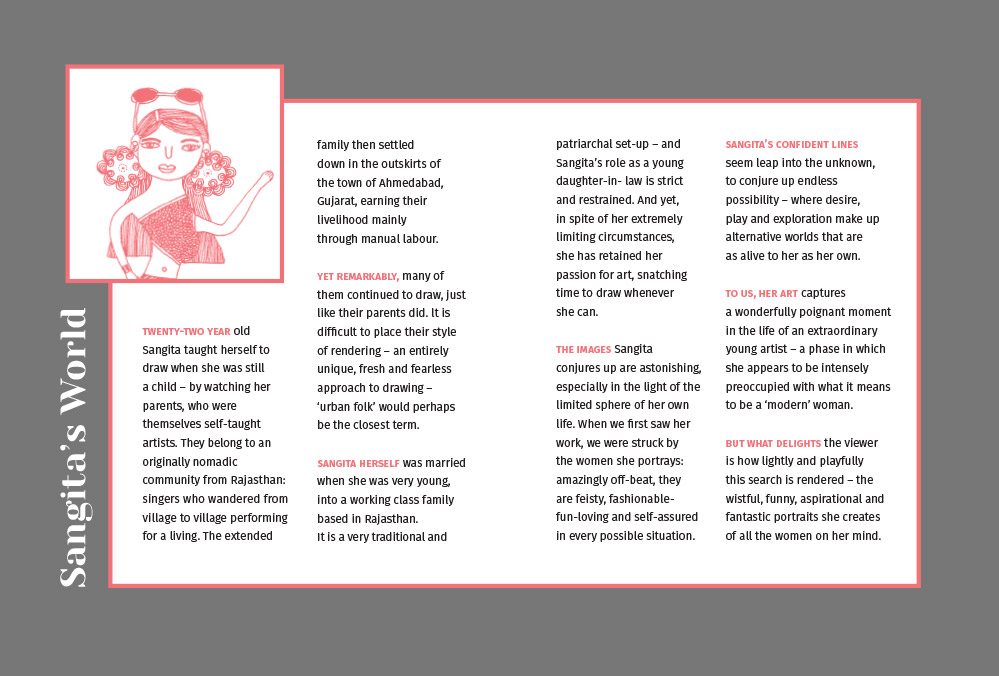
Initial design direction
Very soon, we realised that the fashion angle was limiting. The long process of sorting and ordering Sangita’s images into themes made us realize just how broad and rich the material was. From clothes and parties to travel, sport and performance—a broader conceptual canvas was needed to do justice to all the things these women were up to.
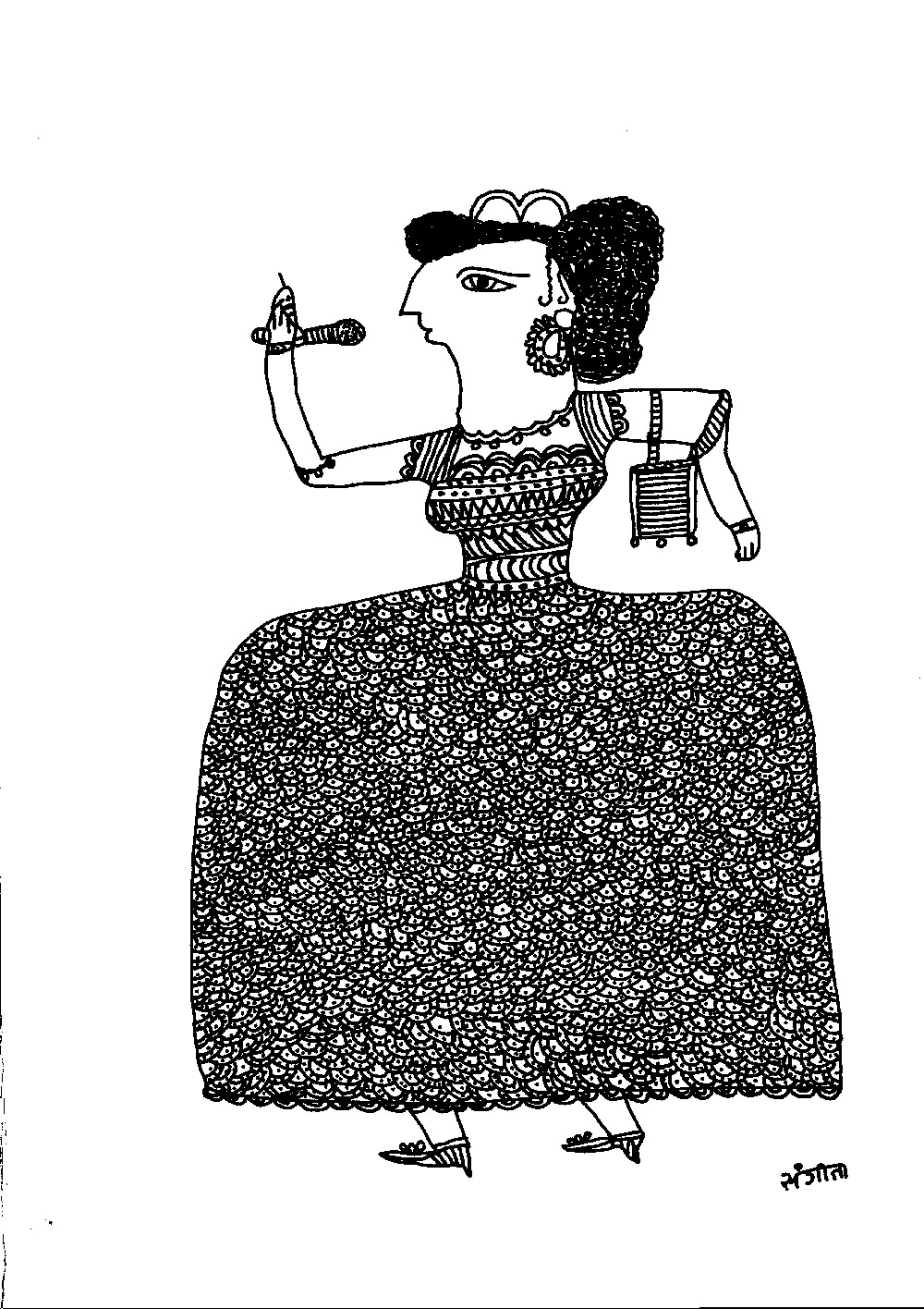
Portrait of a performer
But the problem was that in many of the best images, the women were rendered just as figures, who appeared to be floating on the paper. They needed to be anchored to the ground—or fly in the air, as the case may be—to give the scene a context and location, and turn it into a story. So we sent Sangita some selected images, with a couple of suggestions on what could be done to ‘complete’ the scene. Of course, what we got back from her surpassed anything we could have imagined. (We’ve noticed that she has taken on this form of rendering in her new work!)
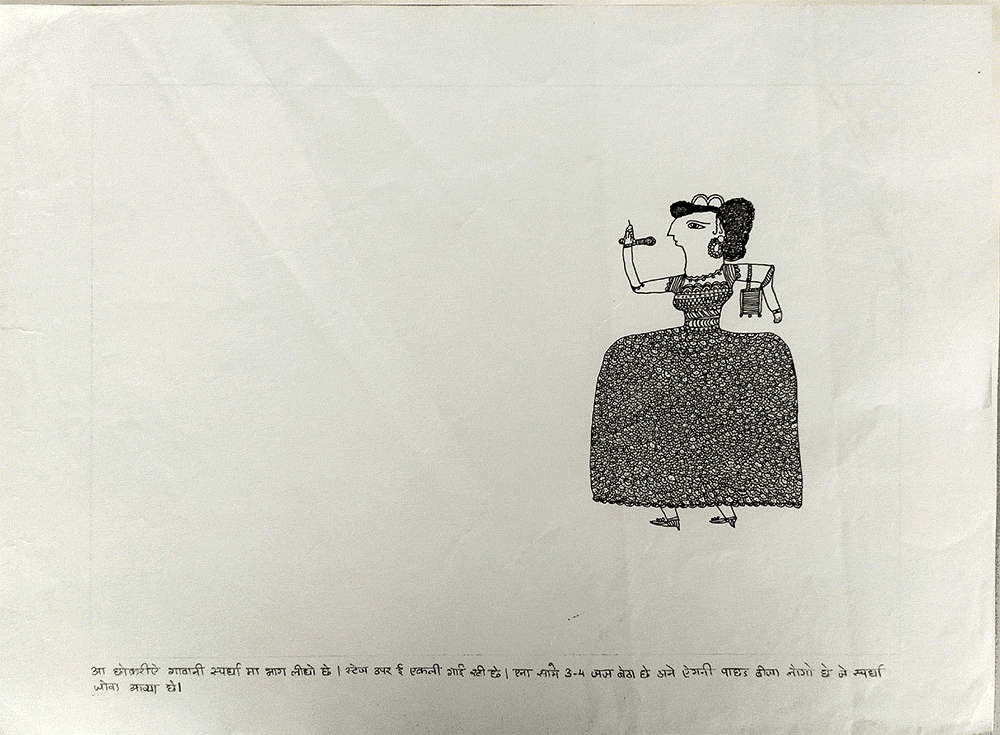
Setting the stage
The initial fashion template idea had put us in mind of adding colour to the black and white drawings. Not too many—just one or two fluorescent, eye-popping ones that fitted right with Sangita’s youthful vision. She loved them.
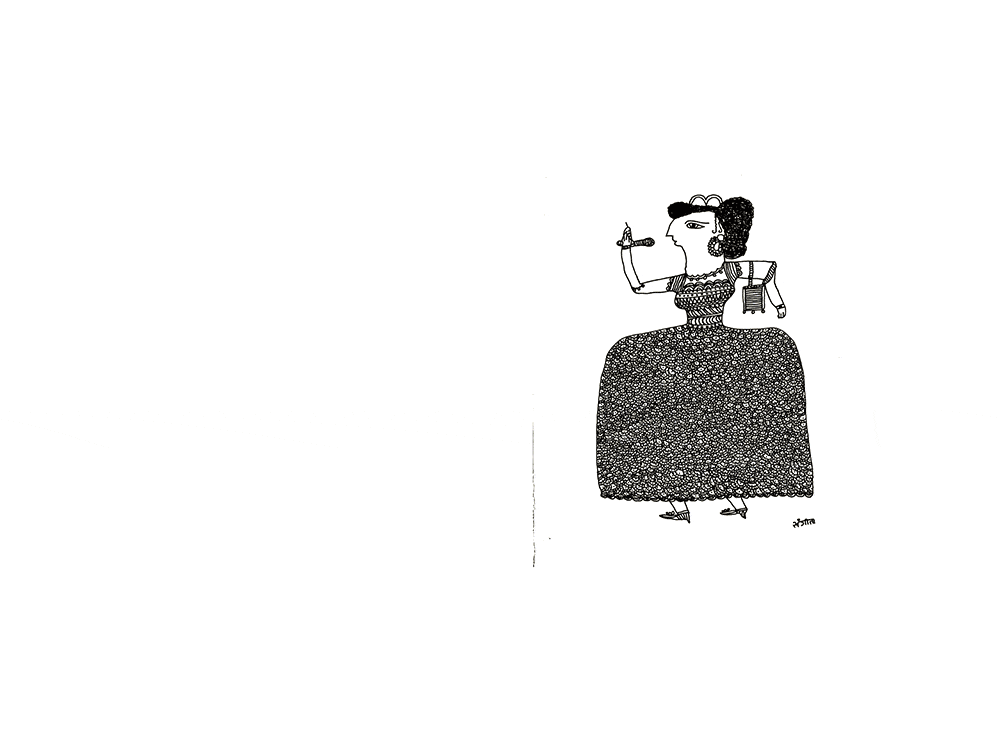
The final spread in vivid colour
Meanwhile, things were not going too well on the editorial front. The thematic selection was fine, but page after page of images—however stunning they were—was proving hard to take in. Moreover, connecting these images to what Sangita was saying in her interview seemed to demand too much of the reader. What we had intended as the concept for the book—connecting Sangita’s life and work—didn’t come through in the form we had. We needed something far more interactive.
So it was back to work, for the editor and designer. We restructured the book, section by section, using Sangita’s words from the interview as the narrative voice. It worked much better.
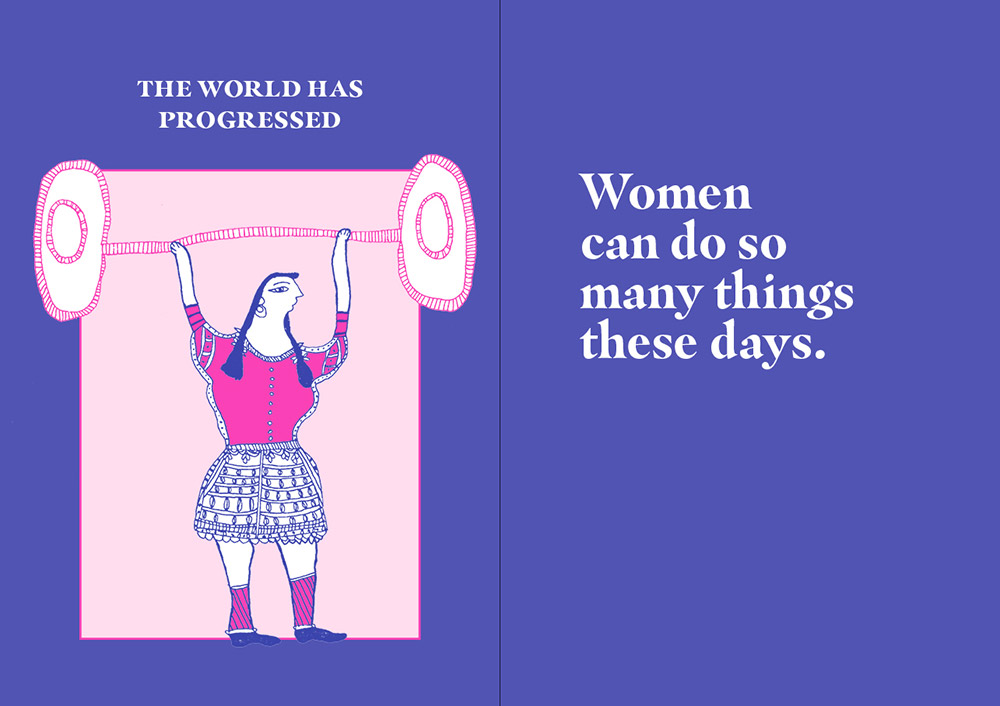
Section pages introduce new themes
We went on to treat the broader context of Sangita’s life differently from the rest of the book, keeping them to the first and last sections. We would have liked her to illustrate these sections, but unfortunately the pandemic intervened at this point, and we lost touch with her for more than a year. So the designer had to use images from other work as illustrations.
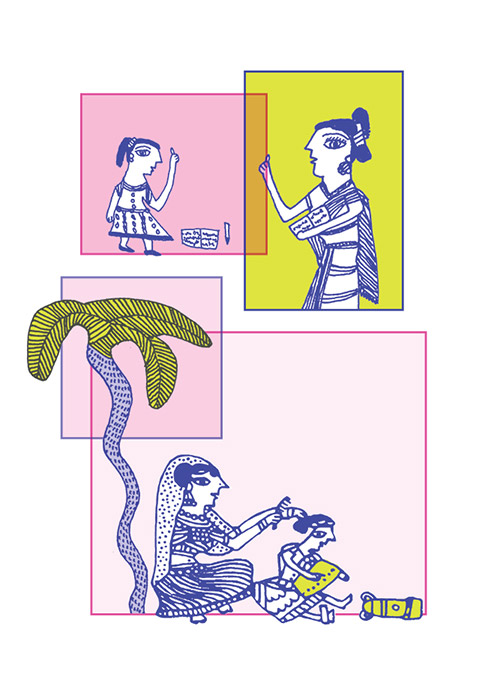
Glimpses into Sangita’s context
And between the pages of her life, we’ve featured Sangita’s women in every kind of delightful situation. Quotes from Sangita become captions that comment and move the story along, adding a frisson of poignancy along the way.
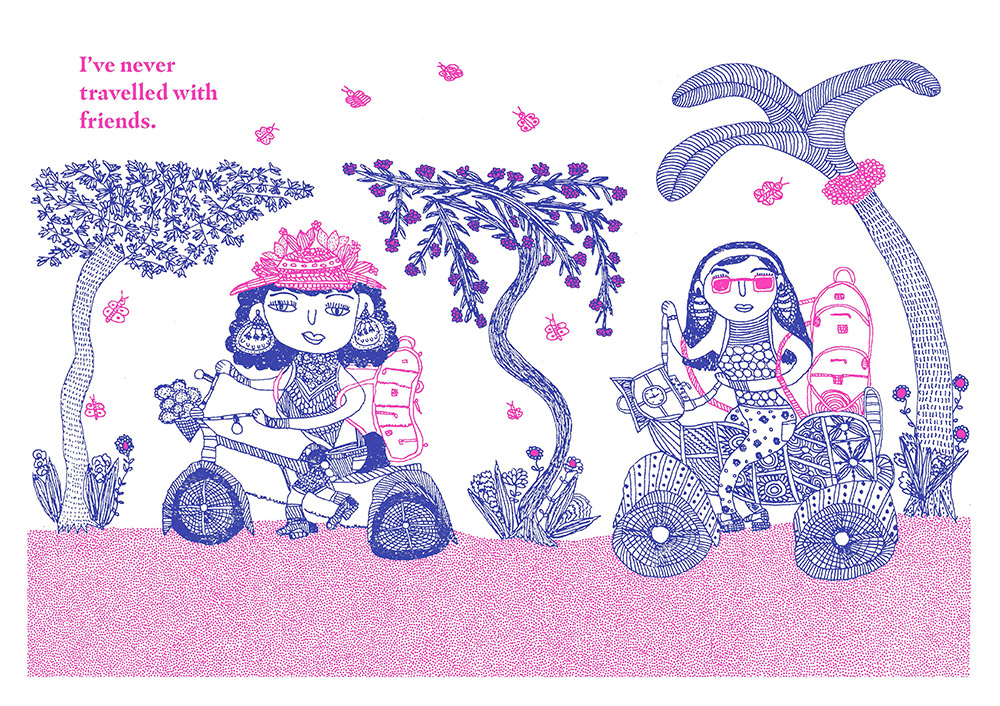
Globetrotters
There was just one last thing left to do. We called Sangita, translated the book back to her, and checked whether she was happy with it. She was. Asked if there was anything more she’d like to put in, she didn’t disappoint:
After the book was printed, we called her again and this is what she said:
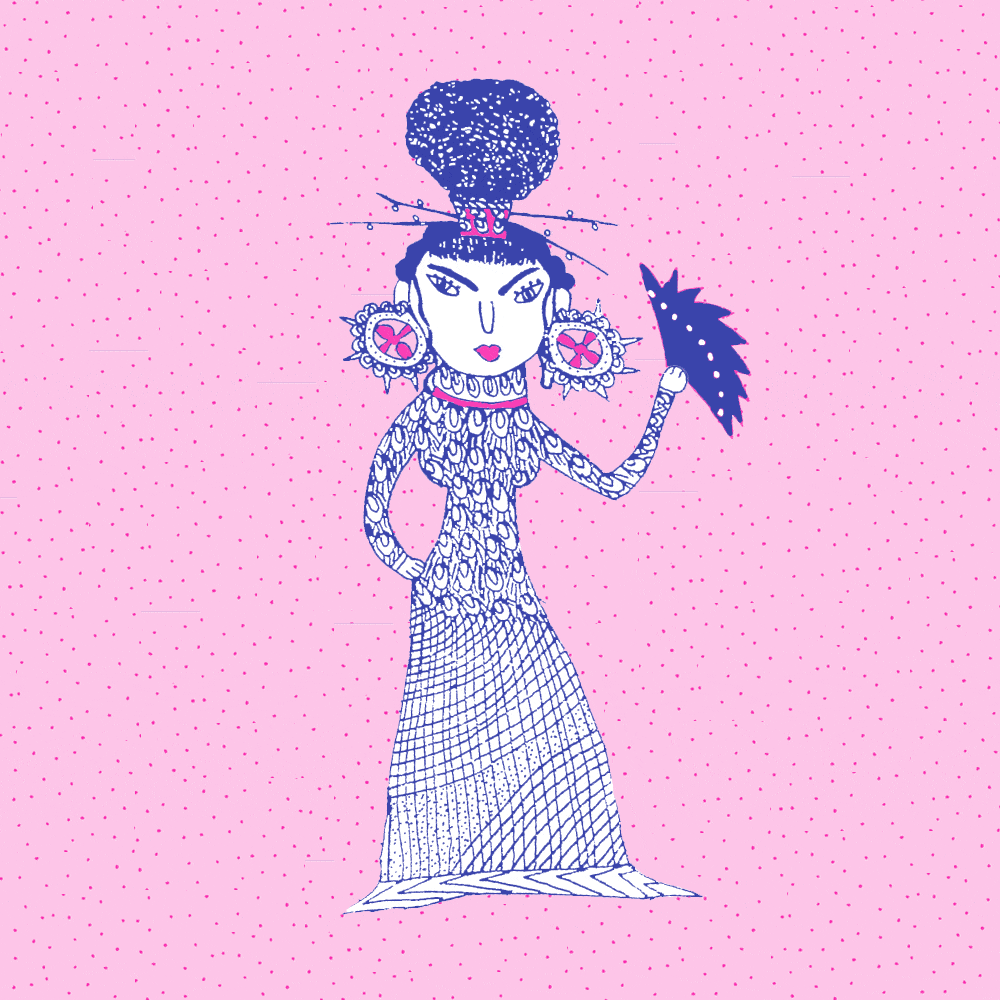
Sayonara!
Gita Wolf started Tara Books, as an independent publishing house based in India. An original and creative voice in contemporary Indian publishing, Gita Wolf is known for her interest in exploring and experimenting with the form of the book and has written and over twenty books for children and adults. Several have won major international awards and been translated into multiple languages. Click here to discover Tara Books she has authored.



CR Romeo
Posted at 06:09h, 30 OctoberWhat an inspiring story and stunning book created with love and imagination from an artist soul. I am waiting patiently to receive my copy , thank you for sharing ♥
rakshna.natarajan
Posted at 18:42h, 06 NovemberThis is beautiful! I’ve ordered my copy. Kudos to Tara for encouraging Ms. Sangita’s creative pursuits.
IndianPhotoAcademy
Posted at 15:18h, 24 AprilBeautifully written and deeply moving. The artistic collaboration and powerful storytelling behind Women I Could Be is truly inspiring. Thank you for sharing this journey.